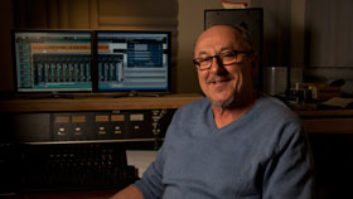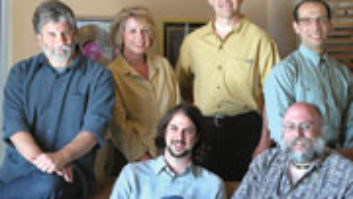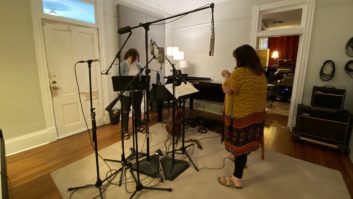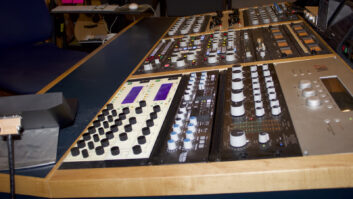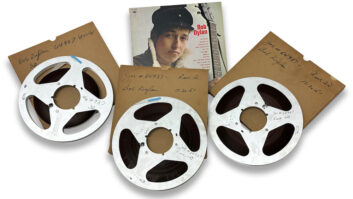[Working at the Boulder, Colo. and Springfield, Va. Studios], David Glasser and Charlie Pilzer recently played dueling studios for the Woody Guthrie Archives on a future CD release of the only known live recording of Guthrie. “The initial transfers went out to David, but I was much more convenient for Nora Guthrie and the folks from the Woody Guthrie Foundation to come down to Springfield to work,” Pilzer says. “We sat and listened to all the material and edited it together. But it took both of us really to do the noise reduction, the restoration work. David would do all the initial work, but I would go through it again, once it was decided exactly which portions of the recording would be used, and the answer was virtually all of it. There was very little that wasn’t used.
“The songs are great, and the coolest part of this project to me is you hear Woody Guthrie just talk. He gives a long talk about growing up in Oklahoma and his family, and another long talk about when he was asked to provide the music for a dance when his second wife, Marjorie, danced with Martha Graham Dance Company. He goes on this long rap about folk singers and dancers, and the fact that, when you’re singing for dancers, you have to sing it the exact same way every time–every beat, every note. If you leave one note out, the dancers run into one another!
“This was a wire recording made in 1949,” Pilzer continues, “and one of the spools of wire was not very well-stored. There were a lot of drop-outs. The file-fixing and the editing were, of course, all done in Sonic Solutions HD. The EQ and dynamics control were from Weiss Engineering. It will be interesting to find out how other people react to it. There are spots where you can hear some artifacts because of the quality of the recording, but that’s just because of storage and deterioration. David and I believe that it’s much better to leave noise than to harm the music. If you feel like you’re digging in, it’s better to back off and just leave the noise there.”
“You want to strip away the artifacts of the recording process, as much as possible, without stepping on the emotions of the music,” agrees Glasser. “Anybody who’s into Woody Guthrie will enjoy it, and they won’t care that it’s a little rough around the edges.”
At the time of this writing, Pilzer was mastering an Ethiopian pop album, and Glasser had just finished a 5.1 project for an Alex de Grassi DVD and was embroiled in ongoing spoken-word archival restoration for the Jack Keroac School of Disembodied Poetics at Naropa University.
Barbara Schultz
